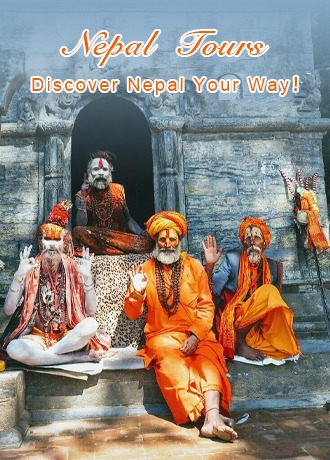Dashain Festival in Nepal
- by Catherine
- Last Updated: 2024-01-07
Dashain(Nepalese: दशैंDaśãi, also Baḍādaśãiबदशैं), also known as Vijaya Dashami is the biggest and longest festival for 15-day celebrated by Hindu Origin Nepalese all over the world. It is held every year in June of the Nepalese calendar (from September to October in the Gregorian calendar). In 2024, Dashain falls on Oct. 21st.
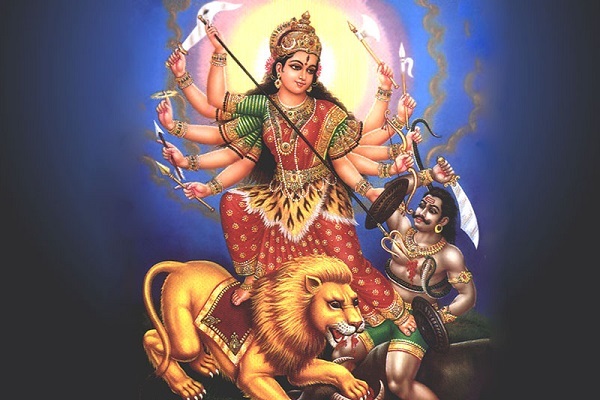
This Nepali festival lasts for fifteen days, and the most important days are the first, seventh, eighth, ninth, and tenth days. The night of the ninth day is called the "Night of Dashain". The tenth day is called "the 10th day of victory." The public holidays are usually 7 days. All government offices, educational institutions, and other departments will remain closed during the holiday season.
In addition, Dashain is also a happy time for family gatherings as it's just before the autumn harvest when Nepalese celebrate the fertility of the land and the harvest of the year. Therefore this festival is also considered to have the effect of emphasizing family reunion and alleviating social conflicts.
Legends
Dashain symbolizes the victory of justice over evil. According to legend, Durga, the goddess of castration with eighteen hands and ten incarnations, dressed in a red robe, riding a lion or tiger, holding different magic weapons in each hand, backed by the gods, fought fiercely Buffalo Mahishasura for nine days and nights, and finally killed the demon and saved the kingdom of heaven. In order to commemorate the merits of Durga, the Kingdom of Nepal respected her as the "sacred protector", and animal sacrifices became the most common and solemn ritual.
Buddhists celebrate the Dashain in Nepal to commemorate King Ashoka's promotion of Buddhism and non-killing.
In India, Dashain is to commemorate Rama's (the chief character in the Hindu epic) victory over the Ravana.
Ceremony and Celebration
Day 1 Ghatasthapana, sowing holy grass Jamara
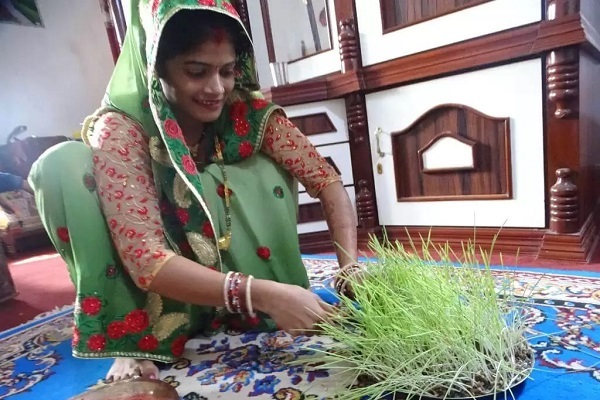
Day 7 Phulpati
Phulpati(means sacred flowers, leaves and plants) is a grand ceremony on the seventh day of Dashain.
During the Kingdom Period, on this day, the Brahmins from Gurkha (central Nepal) would bring the royal holy grass pot Kalasha, holy grass Jamara, banana stems, as well as sugarcane tied with red cloth to the Kathmandu Valley after three days of trekking about 169 kilometers. Hundreds of government officials gathered together, wearing traditional dresses, to witness the celebration of the Nepalese army at Hanuman Palace in Durbar Square, Kathmandu.
After 2008, the royal family was overthrown, and the two-hundred-year tradition was changed. The Prime Minister of Nepal replaces the King to hold the ceremony.
Day 8 Maha Asthami
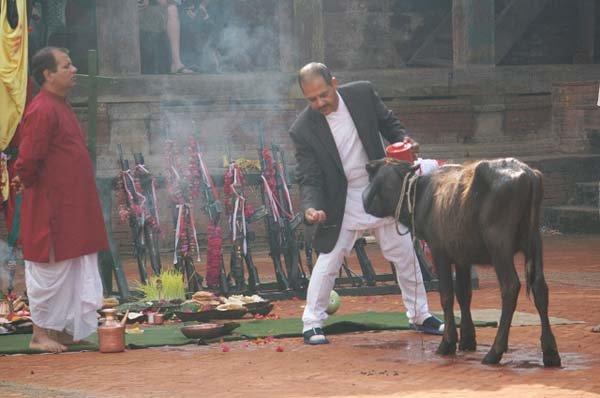
This night is called “a dark night”. At midnight, in the Kot Square near Kathmandu Durbar Square, Nepalese will kill 8 buffaloes and 108 goats with one slash of each. After being consecrated to the Goddess, the meat(called "prasad" in Nepali) will be brought home by the citizens, which is believed to bring good luck to people.
Day 9 Maha Navami, presenting sacred flowers
The ninth day is called Mahanavami, "the great ninth day", which represents the glorious victory of Goddess Durga. This is the last day of Navarati (simply, the whole combat of defeating the Buffalo monster).
The celebration reaches its peak on this day. The army will use white bulls for formal sacrifices to pray to the Durga for invincible courage. On this day, people will also slaughter their livestock to sacrifice their cars or motorcycles, and airlines sprinkle blood on airplane tires, hoping to avoid traffic accidents.
Three Taleju temples in Kathmandu, Patan, and Bhaktapur respectively will open to the public only on this day a year. People line up to visit the Taleju Temple and present flowers to the guardian goddess of the royal family.
All the families would eat goat meat that night.
Day 10 Vijaya/Bijaya Dashami, putting Dashain tika
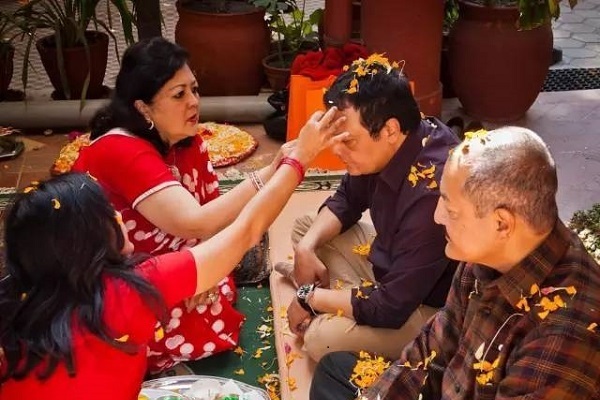
This day is usually considered the first day of the Nepali Dasai. In many areas of India, people will erect huge statues of "Ravana" filled with gunpowder, dress up as "Rama" and light them like rockets.
Day 15 Kojagrata Purnima
The last day of the Dashain is called Kojagrata Purnima, which is a full moon night.
Kojagrata literally means "Who is awake?" On this day, Lakshmi, the goddess of wealth and luck, will come to the earth and bless those who have not fallen asleep all night (Gospel for insomniacs). Nepalese people usually gamble overnight.
Festival Customs
Playing cards is another way to celebrate Dashain. The adults of the family get together and spend the whole day playing cards and joking with each other.
Playing on the swings, called “ping” in Nepali, is one of the most popular entertainment activities during the Dasain. Many people will place the swings by the lake or under the snow-capped mountains, extremely appealing.
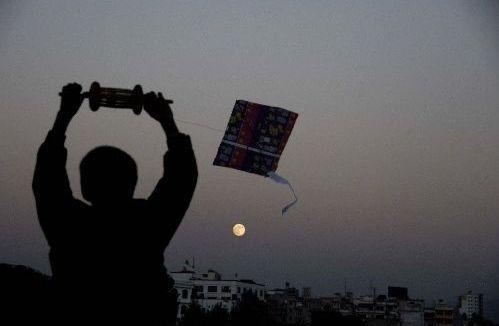
Shopping and dressing in new clothes are an important part of the festival celebration. Many Nepalese live in rural areas and their families are not wealthy. They only buy new clothes at the Dashain. In addition, almost all stores across the country have holiday offers and discounts, which are more attractive to shoppers. Clothes are the item with the highest sales during the holiday season.
Riding Ferris wheels and swings are usual forms to entertain the public in small fairs. In cities, there are usually business exhibitions and celebrations.
During the Dashain Festival, the slaughter of animals is legal to commemorate the bloody battle between the "god" and the "demon". Tens of thousands of animals, including buffaloes, goats, ducks, and chickens, are slaughtered every year in Dashain. This has been regarded as an important traditional ritual and is believed to appease the wrath of the goddess. Almost all temples, especially the Durga and Kali temples, will carry out living sacrifices. On Asthami and Navami two days, the sacrifice reaches its peak. Not only religiously, but also secularly, living sacrifices are also of great significance. People get the meat they need during the festival.
The Timetable of Dashain Festivals
| Year | D7 Phulpati | D8 Maha Asthami | D9 Maha Navami | D10 Vijaya Dashami |
| 2020 | Oct. 23rd | Oct. 24th | Oct. 25th | Oct. 26th |
| 2021 | Oct. 12th | Oct. 13th | Oct. 14th | Oct. 15th |
| 2022 | Oct. 2nd | Oct. 3rd | Oct. 4th | Oct. 5th |
| 2023 | Oct. 21st | Oct. 22nd | Oct. 23rd | Oct. 24th |
| 2024 | Oct. 10th | Oct. 11th | Oct. 12th | Oct. 13th |
| 2025 | Sep. 29th | Sep. 30th | Oct. 1st | Oct. 2nd |
Related Articles
-
Where is Nepal Located?
Located on the southern slopes of the Himalayans, Nepal is a landlocked country in South Asia, in eastern Eurasia, and on the west coast of the Pacific Ocean. -
Nepal Tibet Map
Nepal and Tibet are located on the south and north side of the Himalayas. Here're practical travel maps of the world's two top tourist destinations. -
Nepal Bhutan Tibet Tour Tips
Nepal Bhutan Tibet tour is a transnational journey. Before this special tour, travelers need to know some tips about permits and visas and attractions. -
How to Plan a Nepal Tibet Bhutan Tour?
Here are some tips for planning a wonderful Nepal Tibet Bhutan tour including regional overviews, required permits and visas, travel routes... -
Lukla: World's Most Dangerous Airport and Gateway to Mt.Everest
Lukla Airport(Tenzing-Hillary Airport) is located in Lukla in eastern Nepal. It is the only gateway from Kathmandu to Mount Everest. -
Top 10 Tourist Places to Visit in Nepal
Nepal is a beautiful country. Hinduism, Buddhism, ancient palaces, as well as rich and colorful natural landscape, constitute its unique tourism resources. -
Grand Festivals and Holidays of Nepal
Festivals of Nepal are an important part of Nepalese traditional culture. Most Nepali festivals originate from the worship of various gods. -
Tihar in Nepal
Tihar, also known as Deepawali or Diwali, is the most beautiful festival in Nepal for driving away darkness with light and defeating evil with goodness. -
Hartalika Teej Festival
Hartalika Teej is a traditional festival celebrated by Hindu women. During the festival, married women would fast and pray for longevity for their husbands. -
Things to Know Before Visiting Nepal
Before you visit Nepal, it is necessary to know some Nepal travel tips including how to get to Nepal, cuisines, things to do, best time to go, etc.
Email response within 0.5~24 hours.


